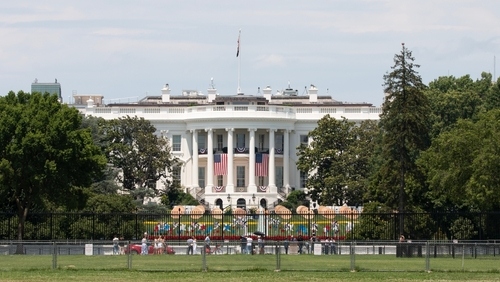US Dollar softens after mixed data, dovish Fed comments

- US Dollar Index retreats to 106.50 and continues hitting a barrier near 107.00.
- Dollar weakens on Fed's Williams hinting at inflation cooling and rate reduction.
- Fed officials remain cautious amid persistent inflation concerns and uncertainty about future rate decisions.
- Mid-tier data from the US came in mixed on Thursday.
In Thursday's session, the US Dollar Index (DXY) flattens after Fed's Williams indicated a potential cooling of inflation and a subsequent decline in interest rates. On the data front, the data for Jobless Claims came in below expectations, while Manufacturing data raised concerns among investors. The DXY hovers around 106.50, indicating a possible move to find support for a rebound.
The DXY maintains an overall bullish momentum, supported by strong economic data and a less dovish Federal Reserve (Fed) stance. Its upward trajectory is driven by hawkish rhetoric, risk-off sentiment and geopolitical tensions. The uptrend is intact with limited expectations of aggressive Fed easing.
Daily digest market movers: US soft as markets digest Fed words, mixed data
- Fed's Williams hinted at potential inflation cooldown and interest rate reduction, leading to DXY's flattening.
- Jobless Claims data fell below expectations, while Manufacturing data raised investor concerns.
- Initial Jobless Claims for the week ending November 15 decreased to 213,000, below expectations.
- Continuing claims unexpectedly surged to 1.908 million, rising by 36,000 from the previous week.
- Philadelphia Fed Manufacturing Survey plummeted to -5.5 in November, slipping into contraction from positive territory.
- According to the CME FedWatch Tool, markets now assign a 55.5% probability of a 25 bps rate cut by the Fed in December, down from 70% a week ago.
- The US 10-year benchmark yield declined to 4.39%, moving further away from its recent high of 4.50%.
DXY technical outlook: Bulls face resistance near 107.00 as indicators show potential consolidation
Technical indicators, including the Relative Strength Index (RSI) and Moving Average Convergence Divergence (MACD), remain positive but have flattened, suggesting consolidation due to near overbought conditions. Index holds above its 20, 100 and 200-day Simple Moving Averages (SMA), and this should provide support to the bullish rhetoric. For the short-term, bulls must hold the 106.00 level.
US Dollar FAQs
The US Dollar (USD) is the official currency of the United States of America, and the ‘de facto’ currency of a significant number of other countries where it is found in circulation alongside local notes. It is the most heavily traded currency in the world, accounting for over 88% of all global foreign exchange turnover, or an average of $6.6 trillion in transactions per day, according to data from 2022. Following the second world war, the USD took over from the British Pound as the world’s reserve currency. For most of its history, the US Dollar was backed by Gold, until the Bretton Woods Agreement in 1971 when the Gold Standard went away.
The most important single factor impacting on the value of the US Dollar is monetary policy, which is shaped by the Federal Reserve (Fed). The Fed has two mandates: to achieve price stability (control inflation) and foster full employment. Its primary tool to achieve these two goals is by adjusting interest rates. When prices are rising too quickly and inflation is above the Fed’s 2% target, the Fed will raise rates, which helps the USD value. When inflation falls below 2% or the Unemployment Rate is too high, the Fed may lower interest rates, which weighs on the Greenback.
In extreme situations, the Federal Reserve can also print more Dollars and enact quantitative easing (QE). QE is the process by which the Fed substantially increases the flow of credit in a stuck financial system. It is a non-standard policy measure used when credit has dried up because banks will not lend to each other (out of the fear of counterparty default). It is a last resort when simply lowering interest rates is unlikely to achieve the necessary result. It was the Fed’s weapon of choice to combat the credit crunch that occurred during the Great Financial Crisis in 2008. It involves the Fed printing more Dollars and using them to buy US government bonds predominantly from financial institutions. QE usually leads to a weaker US Dollar.
Quantitative tightening (QT) is the reverse process whereby the Federal Reserve stops buying bonds from financial institutions and does not reinvest the principal from the bonds it holds maturing in new purchases. It is usually positive for the US Dollar.




